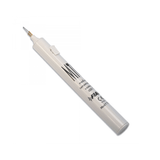Doppler Uses in Medicine
 Are you looking for a medical supplier? We are a trusted supplier of medical equipment including Dopplers.
Are you looking for a medical supplier? We are a trusted supplier of medical equipment including Dopplers.
What Is a Doppler Ultrasound?
This is a test which uses high-frequency sound waves that measure the flow of your blood through your blood vessels. A standard ultrasound also uses sound waves to display images, but it is not able to detect blood flow. The Doppler ultrasound can estimate how fast the blood flow is by detecting changes in its pitch. When a Doppler ultrasound is carried out, a technician will press a small device against the skin area and across the patient's body as required. The Doppler Ultrasound can also be used as an alternative to invasive procedures.
Types of Doppler Ultrasound
Continuous Wave Doppler - This scan gives information about the blood flow through the blood vessels from the pitch of the sound waves. Doctors can use this technique if they suspect that there is an area of the body that contains arteries that are blocked or narrow. The Continuous Wave Doppler, sometimes known as the “bedside” Doppler can be carried out at the bedside in a hospital which quickly identifies the extent of damage to blood vessels.
Duplex Doppler - The Duplex Doppler uses a computer to turn the sounds into a graph, it uses the method of a traditional ultrasound to create an image of blood vessels and the organs that surround them. This process helps to show the speed of blood flow and the direction that it is moving in.
Colour Doppler - This is another scan which also uses the traditional ultrasound methods to display a picture. The computer changes the Doppler sounds into colours which then appear on top the image of blood vessels. This approach also demonstrates the speed and direction of the blood flow.
A Doppler Ultrasound Can Be Used to:
- Check for injuries to a patient's arteries.
- Monitoring specific treatments to veins and arteries.
- Identify blood clots in the neck, arms, or legs.
- Detect veins that are functioning poorly in the legs which can result in blood or other liquids to gather in your legs.
- Peripheral artery disease, this is where there is a reduced blood circulation in your legs.
- Aneurysms (a bulge in a blood vessel).
- The narrowing of the arteries, for example, carotid artery stenosis.
- Assess the blood flow of a patient after they have had a stroke.
- Examine or identify any vein problems such as varicose veins.
- Guide treatment in patients for irregular veins.
- Monitor the flow of blood after a patient has received blood vessel surgery.
If you would like further information on our Doppler units, call us today on 02071014177 to discuss your needs and to find out how our medical supplies can help you.
Recent Posts
-
Cauteries & Cryosurgery for minor procedures
Cauteries and cryosurgery work in a similar fashion, even though they are at opposite ends of the s …4th Jul 2019 -
Choosing the best digital thermometer
As any parent, or healthcare professional knows only too well, getting an accurate temperature read …6th Jun 2019 -
World Hand Hygiene Day
Any healthcare professional will be able to attest to the importance of good hand hygiene. 5 May 2 …1st May 2019




